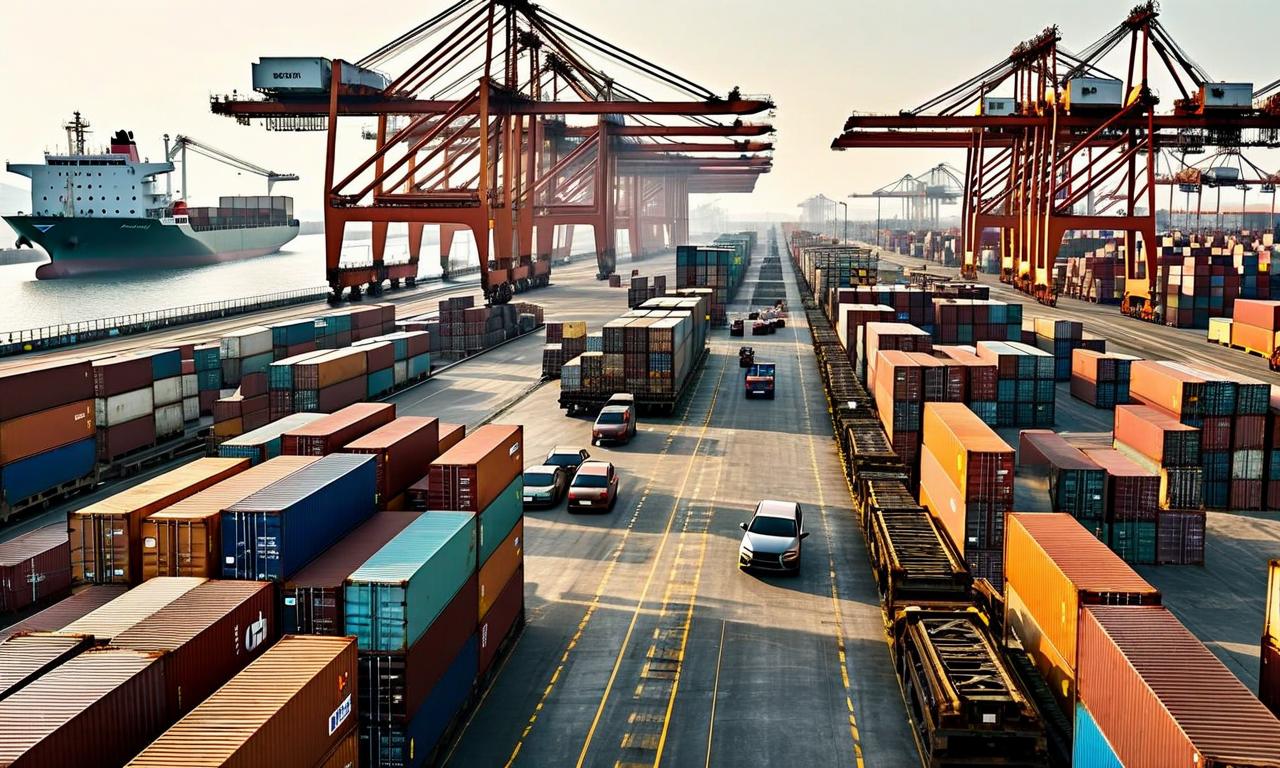Japan's Exports Slump 2.6% in July, Largest Decline Since 2021 Amid US Tariff Pressures
Japan's exports fell 2.60% in July, the steepest decline since February 2021, primarily due to decreased shipments in cars, auto parts, and steel. Exports to the US declined by 10.10%, with vehicle shipments down 28.40% and auto parts exports down 17.40%. This comes in the wake of US tariffs, including 25% on Japanese cars and auto parts, and 50% on steel. Despite a 1.20% rise in export volumes, Japan recorded a trade deficit of ¥117.5 billion. A recent trade deal could potentially reduce tariffs to 15%, but implementation timing remains uncertain.

*this image is generated using AI for illustrative purposes only.
Japan's export sector faced significant headwinds in July, with overseas shipments recording their steepest decline in over two years. The latest trade data paints a challenging picture for the world's third-largest economy as it grapples with the impact of US tariffs and global trade tensions.
Export Decline Details
Japan's exports fell by 2.60% in July compared to the same month last year, marking the most substantial drop since February 2021. The decline was primarily driven by decreased shipments in key sectors:
- Cars
- Auto parts
- Steel
These industries have been particularly affected by the ongoing US tariffs, which have reshaped the landscape of global trade.
US Market Impact
The impact on Japan's trade with the United States was particularly pronounced:
- Overall exports to the US declined by 10.10%
- Vehicle shipments plummeted by 28.40%
- Auto parts exports decreased by 17.40% in value
These figures underscore the significant challenges faced by Japanese manufacturers in maintaining their market share in the US amid heightened trade barriers.
Tariff Pressures
The decline in exports comes in the wake of substantial tariffs imposed by the United States:
- 25% tariffs on Japanese cars and auto parts (imposed in April)
- 10% duties on most other goods
- Steel tariffs doubled to 50% in June
These tariffs have put considerable pressure on Japanese exporters, with major companies like Toyota warning of substantial financial impacts. Toyota, for instance, has estimated a potential ¥1.4 trillion hit from US levies.
Volume vs. Value Dynamics
Interestingly, while the value of exports declined, export volumes actually rose by 1.20%. This divergence suggests that Japanese companies are adopting aggressive pricing strategies, cutting prices to maintain their market share despite the increased costs imposed by tariffs.
Trade Balance and Economic Implications
Despite the increase in export volumes, Japan recorded a trade deficit of ¥117.5 billion in July. This deficit was accompanied by a 7.50% fall in imports, further highlighting the complex trade dynamics at play.
The overall decline in exports raises concerns about Japan's economic growth prospects. It may also influence the Bank of Japan's approach to monetary policy, potentially reinforcing its cautious stance on interest rate decisions.
Future Outlook
A glimmer of hope emerged with a trade deal reached in July, which could potentially reduce tariffs to 15%. However, the timing of implementation remains uncertain, leaving Japanese exporters in a challenging position for the foreseeable future.
As global trade tensions continue to evolve, Japan's export sector will likely remain under scrutiny, with its performance serving as a key indicator of the broader economic health of the nation and the effectiveness of its trade policies in navigating an increasingly complex international trade environment.

























